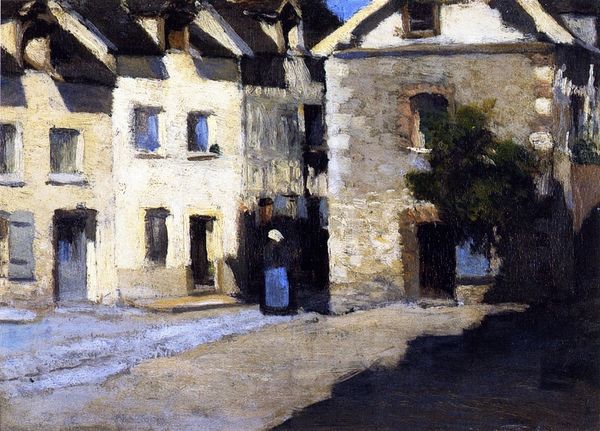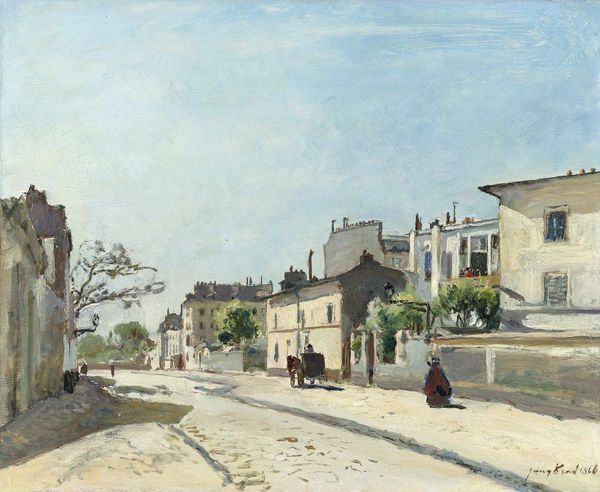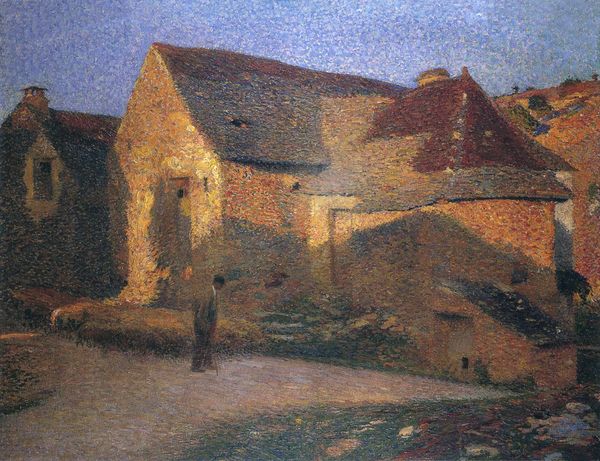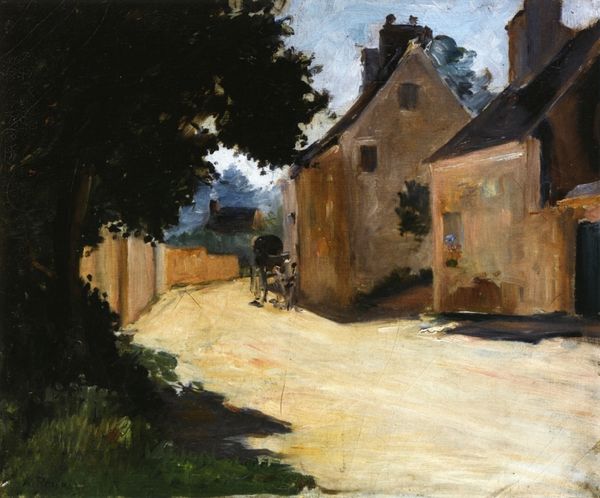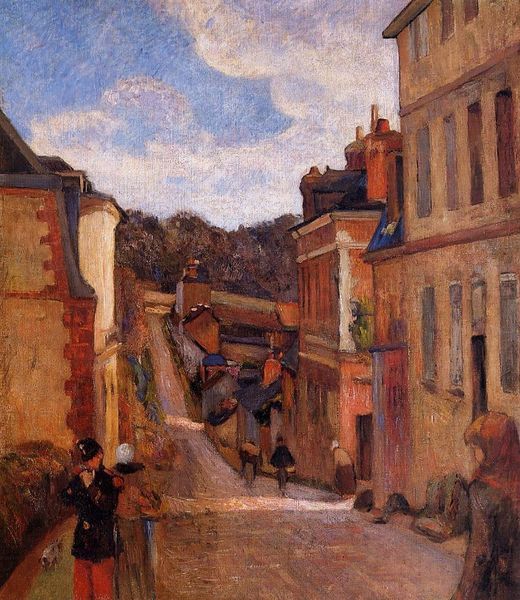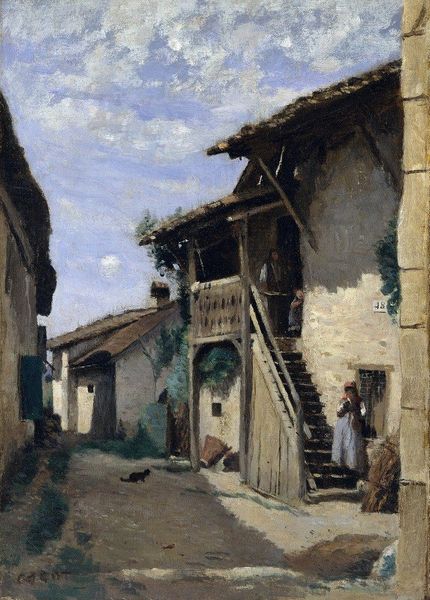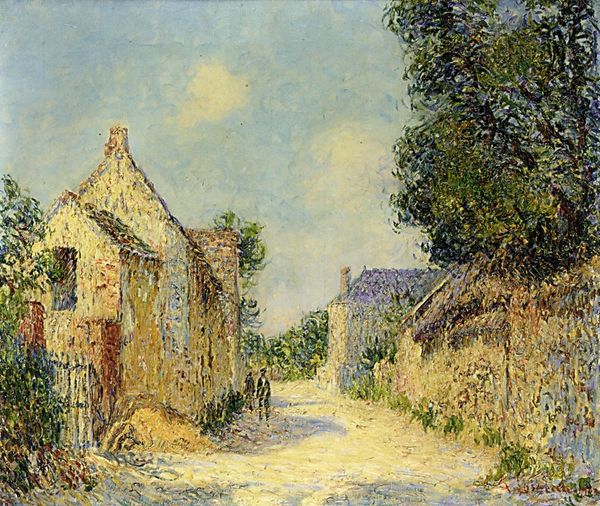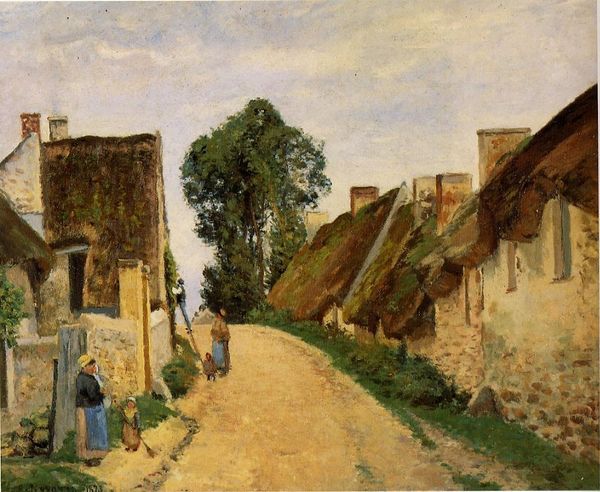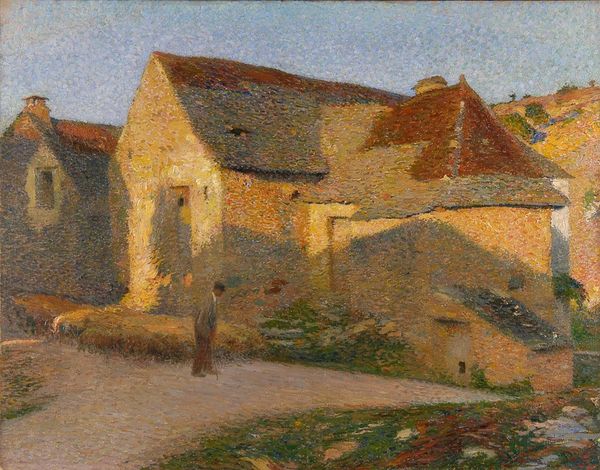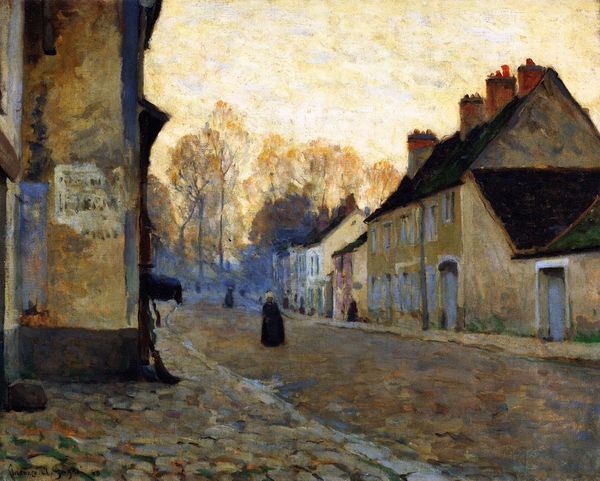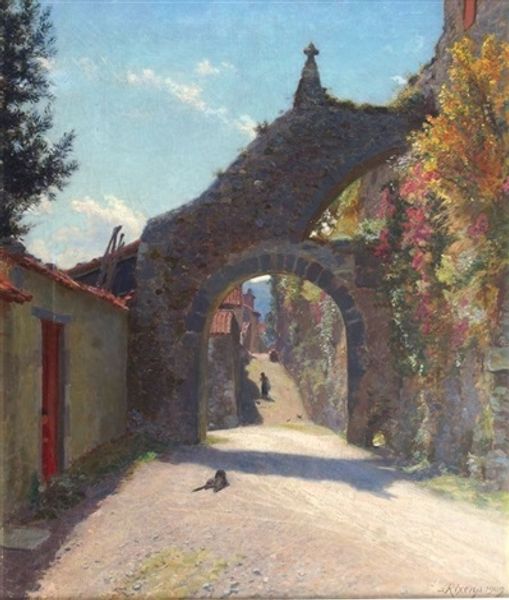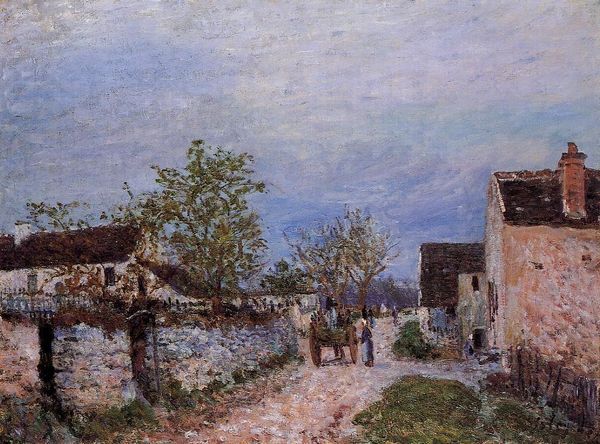
painting, oil-paint
#
sky
#
art-nouveau
#
painting
#
oil-paint
#
landscape
#
oil painting
#
france
#
cityscape
#
post-impressionism
#
street
#
building
Copyright: Public domain
Curator: What a seemingly unremarkable scene, but holding so much depth. "Street in Samois," an 1888 oil painting by Odilon Redon. Editor: It strikes me as desolate. The buildings loom, and the street feels very empty. A distinct lack of activity gives it a strange stillness. Curator: Consider the post-impressionist movement Redon belonged to. We see here, the beginnings of abstraction, using form and color not necessarily to represent reality, but to evoke a feeling. It asks, what's the labor of producing the urban image here, given the period? How is urbanization presented? Editor: True. The material handling of paint seems to indicate something beyond mere depiction. Notice the impasto in the lighter areas of the street—a sort of physical building of the road surface. Do you think that haptic quality makes up for the flatness of perspective? Curator: It does for me. And beyond the painting itself, consider how Redon chose this subject: a quiet French streetscape rather than a bustling Parisian boulevard. There's a subtle political commentary, perhaps, on the rapidly changing face of France, its social structures and class dynamics? The provinces stood as silent witnesses. Editor: Fascinating! And those walls, closing in on the road like institutional bulwarks, remind us that Redon made his start creating lithographs as social critique, before developing as an art for art's sake Symbolist painter later in his career. How do these institutional forces reflect, not just France, but European socio-political issues more broadly? Curator: Exactly. Even in its quietude, “Street in Samois” speaks volumes. It showcases, to me, the power art wields in subtly recording societal evolution. We see that not all art is created equal in its reflection of the social structure that begets its existence. Editor: It leaves me contemplating the hidden lives within those buildings. Who lived there? What stories do these silent stones conceal? What institutions did the architecture of Europe as a whole support, then and now? A striking reflection on history through a single street.
Comments
No comments
Be the first to comment and join the conversation on the ultimate creative platform.
